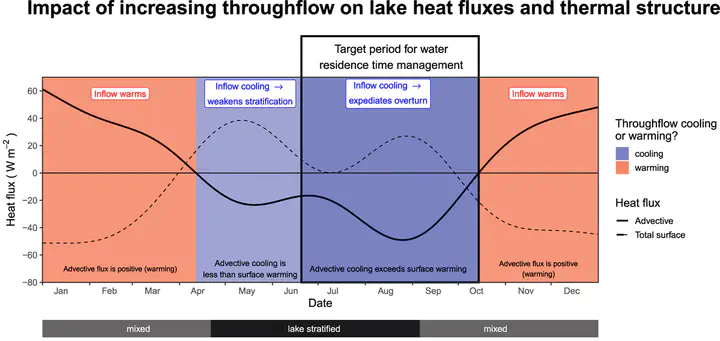Annual water residence time effects on thermal structure: A potential lake restoration measure?
 Annual summer stratification duration with the fitted linear regression and segmented linear regression for the five models.
Annual summer stratification duration with the fitted linear regression and segmented linear regression for the five models.
Abstract
Innovative methods to combat internal loading issues in eutrophic lakes are urgently needed to speed recovery and restore systems within legislative deadlines. In stratifying lakes, internal phosphorus loading is particularly problematic during the summer stratified period when anoxia persists in the hypolimnion, promoting phosphorus release from the sediment. A novel method to inhibit stratification by reducing residence times is proposed as a way of controlling the length of the hypolimnetic anoxic period, thus reducing the loading of nutrients from the sediments into the water column. However, residence time effects on stratification length in natural lakes are not well understood. We used a systematic modelling approach to investigate the viability of changes to annual water residence time in affecting lake stratification and thermal dynamics in Elterwater, a small stratifying eutrophic lake in the northwest of England. We found that reducing annual water residence times shortened and weakened summer stratification. Based on finer-scale dynamics of lake heat fluxes and water column stability we propose seasonal or sub-seasonal management of water residence time is needed for the method to be most effective at reducing stratification as a means of controlling internal nutrient loading.